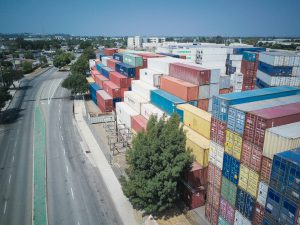The Supply Chain Problem
If we cast our minds back to March / April 2020, we recall how basic goods like toilet roll and pasta suddenly became scarce commodities, with a mix of panic buying and supply chain issues resulting in some shelves being left empty for several weeks. As the pandemic developed and the virus cut through much of the world’s population, we saw global supply chain issues occur as manufacturing companies, most notably in China but also in other countries, completely shut down. Eighteen months on from the start of the pandemic, and one unfortunate Suez Canal incident later, the manufacturing industry has almost fully recovered yet the supply chain issues remain.
The Big Picture
The issues of last Spring and the issues today, while both consequences of the pandemic, are two entirely different matters. In Spring it was easy to understand why widespread disruptions to supply occurred, as when there are no workers in the factory, no goods are being made. Indeed, most factories across China and the world completely shut down for a few weeks to prevent the spread of the virus. Yet, even as factories opened back up, global supply chain issues have persisted.
One contributing factor to the ongoing supply chain problem is the failure of the manufacturing industry to predict the pick-up in demand for goods through the pandemic. Although factories had begun to reopen, the global economy was on the cusp of deep recession, and as such the manufacturing industry scaled back production as it was expected that mass unemployment and other economic factors would result in less spending, and, by extension, less demand. However, government aid such as the furlough scheme in the UK, and stimulus support in the US resulted in far greater demand than originally expected. In addition, bars, restaurants, arenas, sports stadia, and similar venues remained closed, further increasing the demand for material goods as ‘discretionary’ expenditure could not be channeled elsewhere.
Although paving the way for a speedy manufacturing recovery, the infrastructure simply has not been in place to keep pace with demand. The virus continues to impact international shipping, with docks in China forced to shut down to prevent the spread of new variants. This has led to further struggles to obtain the necessary materials to satisfy demand, and even in cases where goods are readily available, it has been made near impossible to transport them in a timely fashion due to dock closures.
The Result? Inflation
The combination of these factors results in the cost of both production and distribution rising significantly, with companies bidding against each other to secure shipping containers. For example, the average cost of sending a shipping container from China to the UK is ten times more than it was pre-pandemic! This, of course, has resulted in many goods either becoming unattainable or significantly more expensive than normal as the costs are passed through to the end consumer.
As with almost every country in the world, the UK has been negatively impacted by global supply chain issues. However, a domestic worker shortage and transport disruption caused by Brexit, and, albeit to a lesser degree, the ‘pandemic’, has resulted in retailer’s stock levels being at their lowest since 1983. The transport industry is currently dominating the headlines (not least the supposed fuel shortage!), with an estimated 100,000 vacancies for HGV drivers alone. Transport Secretary, Grant Shapps, has appealed to retired HGV workers to return to work and even hinted at relaxing rules to allow European drivers to work in the UK, although (given that there is also a similar shortage in that region) this may not provide much relief.
Cave & Sons
Although we seem to be through the worst of the pandemic from a public health perspective, evidently the economic repercussions are going to be felt for years to come. At Cave & Sons, we pride ourselves on being able to block out ‘the noise’ and provide expert, unbiased advice through uncertain times such as these. If you would like to speak with an adviser today, please contact us on 01604 621 421, or fill in an online enquiry form.

